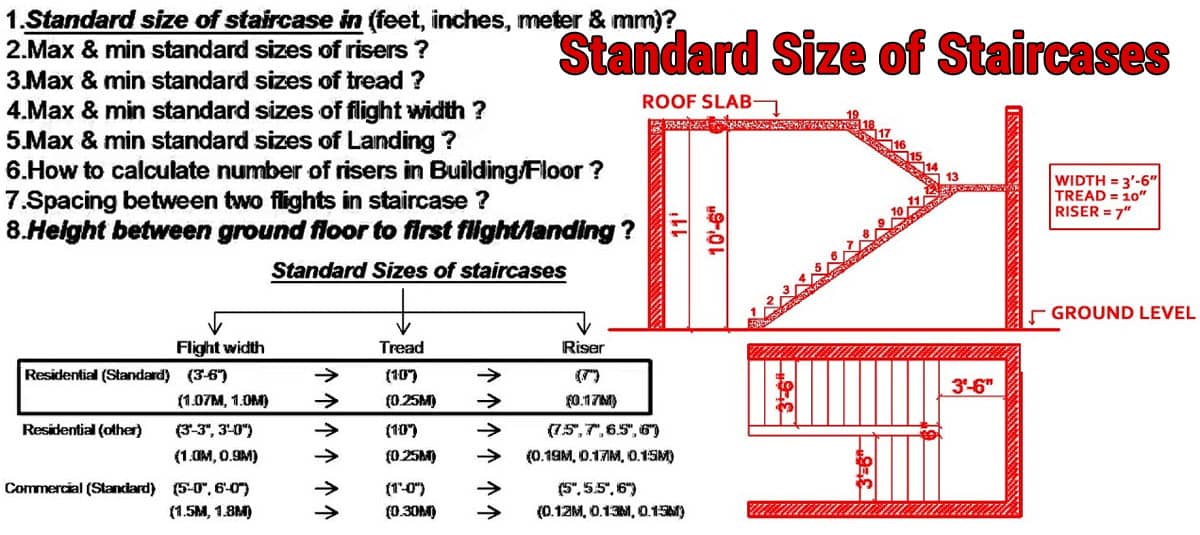Standard Staircase Dimensions in Buildings

Functioning as a system of steps leading people from one level of the building to another, a staircase is a pretty complex building element. This is because staircases have particular geometry and function. Everything about this building element needs to be carefully planned because of that.
The dimensions of the steps and regulations of the heights and widths of the steps need to be carefully maintained. Not only that, you need to pay attention to the material being used as well.
In this article we will discuss the standard staircase dimensions today.
Staircase Dimensions
In staircase design, concrete offers great reliability in terms of load-bearing and production benefits. Geometry requirements, heat resistance and tensile strength, all can be fulfilled by using concrete. The staircases that are made of in-situ concrete can be adapted to any building plans on site.
On the other hand, precast staircases are not as flexible and can only be fitted into predefined design dimensions specific for that staircase design.
However, one advantage of using precast staircases is that they can be produced efficiently, faster and more cleanly than in-situ staircases.
It goes without saying that special attention must be paid to the basic dimensions of the stair breadth and rises. You should also need to take care of dividing the staircase with proper landings in order to enable resting places in a long climb. The number of steps without an intermediate landing should be counted in this matter.
Staircase dimensions are an important part of staircase safety. This page covers all of the important staircase measurements and a mistake to watch out for.
Staircase design has to account for the human step sizes and the comfortable distance a human foot can travel vertically.
The tread size is dictated by the average adult foot size. Though it is not necessary to fit your entire foot on the stairs, it should be kept as close as possible in order to keep it as safe as possible. The standard tread size is 10 inches minimum, or 25.4 centimeters.
On the other hand, the limit of the rise of each stair is controlled by how we climb down the stairs. Most humans can safely dip their feet half a feet or more without having strain or tipping over. This dictates that the maximum rise of a stair should be no more than 7-8 inches or 19-20 centimeters.
This depends on which direction you are facing. If you are facing backwards, you can safely climb far bigger distances up or down. That is why the rungs of a ladder can be a feet apart and yet we can use them easily. Another thing to note is that the maximum distance between two balusters may not be bigger than 6 inches or 15 centimeters. This is to ensure that you do not catch an arm or feet in them.
Video Source:
